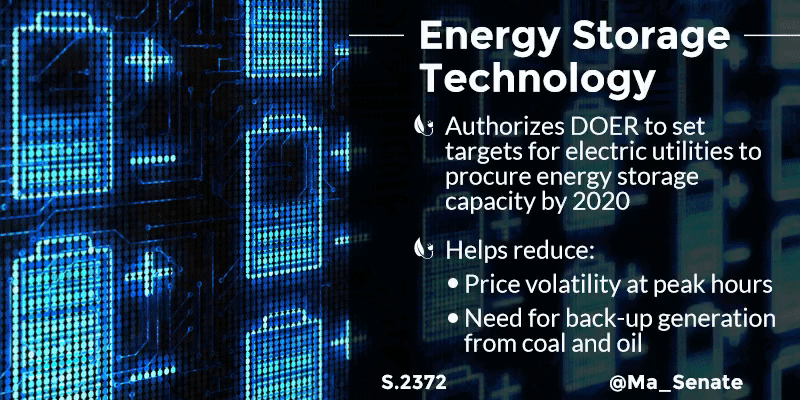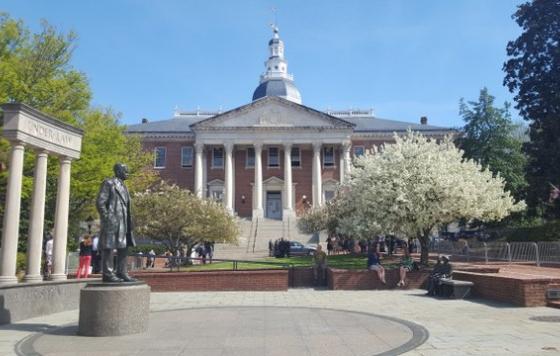
There's lots of energy at work in Massachusetts. I have to admit, I'm a little surprised—after a stunningly high-stakes legislative session and two huge Massachusetts Supreme Judicial Court decisions (Case 1: kids sue state to win climate regulation; Case 2: unlikely allies team up to tell the Governor he can't tax us for new fracked gas pipelines) I was expecting things to slow down a little. I was wrong. Here’s a quick review of one energy initiative that’s moving—actually, it’s more about energy staying in place.
Energy Storage –
The Baker administration recently released a detailed, 200+ page report, State of Charge, which looks at economic benefits, emission reductions and applications of energy storage. Now, many of us think “batteries” when we think storage, but the report goes further, examining systems that store potential energy of pumped water or compressed air, utilize magnetic fields to moderate power usage, hold heat or cold in water for later use in a heating or cooling system, and, yes, leverage various types of batteries.
Storage can help Massachusetts deal with constraints on the power grid, reduce costs and cut emissions. According to DOER, deploying 600 megawatts of storage by 2025 would provide $800 million in benefits to ratepayers. The costs of storage itself are coming down—for lithium ion batteries, for example, costs are projected to halve in just a few years.
At Clean Water, we see clear applications for energy storage, from accelerating our use of renewable energy, to protecting critical facilities to reducing pollution and public health and empowering urban communities of color. Working with community partners in Worcester, Chelsea, and Boston’s Chinatown, my colleague Alex Papali is leading an entrepreneurial effort to develop energy microgrids—you’ll hear more about this from him later. Storage and renewable energy can also be used to defer investments in costly, high impact projects like high-voltage transmission lines or large gas infrastructure. That's important to think about, given that big transmission––highly controversial right now in communities like Hudson and Sudbury––can be the wrong choice for both ratepayers and our environment.
Storage is happening. California has dozens of megawatts of storage deployed and is planning for over a gigawatt (1000 megawatts, comparable to a large power plant) in the coming years. New York City just set its own energy storage target. Massachusetts’ 2016 omnibus energy bill requires the state to decide whether the Department of Energy Resources should set an energy storage target by December 31, 2016. If they proceed––and I think they will—then the next question is how much storage, a decision that will come in by July 1, 2017.
Stay tuned for more updates on energy storage, solar power and climate regulation this fall.
To learn more about storage, check out:
- Department of Energy Resources – State of Charge report
- Greentech Media – Why the New Massachusetts Energy Storage Report is Such a Big Deal
- Renewable Energy World – Energy Storage for Public Health: A Smarter Way to Deploy Resources



